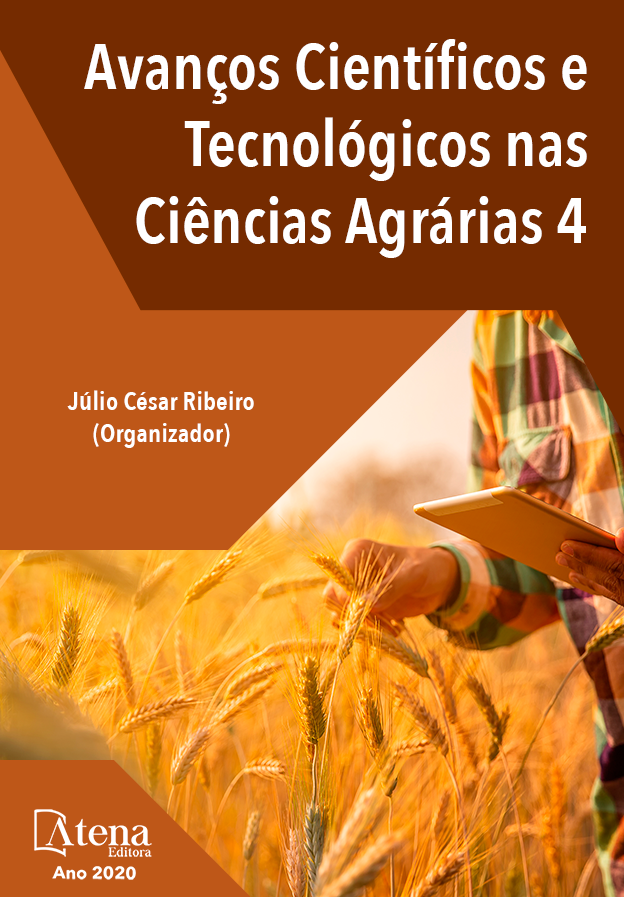
ISOLADOS, TIPOS DE ESTRESSES E TEMPERATURAS DE Trichoderma spp. SELVAGENS E TRANSFORMADOS
Uma variedade de cepas polivalentes de isolados de Trichoderma está disponível no mercado para controle biológico de pragas e doenças de plantas, além de estarem no campo nativo e antropizado representando a diversidade global. Tendo como objetivo analisar a fisiologia do crescimento, morfometria de isolados de Trichoderma spp. Os experimentos foram conduzidos em três etapas: i) Fisiologia do crescimento: em uma população de 25 isolados, em delineamento inteiramente casualizado, com três repetições, foram avaliados o: fator 1: efeito dos isolados (25), fator 2 - efeito dos tipos de estresse (três - sorbitol, NaCl e sem estresse), fator 3 - efeito da temperatura (10 oC, 20 oC e 27 oC). i) Diariamente durante sete dias o diâmetro da colônia (mm) foi medido. ii) Morfologia e Morfometria: a partir dos isolados cultivados anteriormente caracterizou-se as colônias morfologicamente, realizou-se a morfometria dos conídios e avaliou-se a produtividade de conídios em cada condição morfocultural imposta. Testes de hipóteses paramétricas e não paramétricas e análises multivariadas foram utilizadas para distinguir os tratamentos. A partir da fisiologia do crescimento observou-se o efeito individual dos isolados, identificando o isolado SLV1 por apresentar a maior média de crescimento em todos os dias avaliados; o estresse que mais inibiram o crescimento dos isolados foram NaCl seguido do sorbitol, havendo variações de insensibilidade aos estresses empregados, contudo refletindo em inaptidão reprodutiva. A partir da morfologia e morfometria os isolados que apresentaram maior comprimento do esporo foram SLV 5, SLV8 e SLV 10 e o estresse reduziu estatisticamente o tamanho do conídio do maior para o menor estatisticamente representado pelo meio batata-dextrose-ágar, sorbitol e NaCl. Através desse trabalho foi reconhecido o isolado SLV1 como um candidato para testes de campo e um agente de controle biológico de doenças de plantas.
ISOLADOS, TIPOS DE ESTRESSES E TEMPERATURAS DE Trichoderma spp. SELVAGENS E TRANSFORMADOS
-
DOI: 10.22533/at.ed.3372028098
-
Palavras-chave: antagonismo, fisiologia do crescimento, estresse, transformação genética.
-
Keywords: antagonism, growth physiology, stress, genetic transformation.
-
Abstract:
A variety of multipurpose strains of Trichoderma isolates are commercially available for biological control of plant pests and diseases, as well as being in the native and anthropized field representing global diversity. The aim of this work is to analyze the growth physiology, morphometry of isolates of Trichoderma spp. The experiments were conducted in three stages: i) Growth physiology: in a population of 25 isolates, in a completely randomized design with three replications, the following factors were evaluated: factor 1: isolates effect (25), factor 2 - types effect stress (three - sorbitol, NaCl and no stress), factor 3 - temperature effect (10 oC, 20 oC and 27 oC). i) daily for seven days the diameter of the colony (mm) was measured; ii) morphology and morphometry: from the previously cultivated isolates the morphological colonies were characterized, the conidia morphometry was performed and the conidia productivity was evaluated in each imposed morphocultural condition. Parametric and nonparametric hypothesis tests and multivariate analyzes were used to distinguish the treatments. From the growth physiology we observed the individual effect of the isolates, identifying the SLV1 isolate by presenting the highest growth average in all evaluated days; The stresses that most inhibited the growth of isolates were NaCl followed by sorbitol, with variations in insensitivity to the stresses used, however reflecting in reproductive disability. From the morphology and morphometry the isolates that presented the largest spore length were SLV 5, SLV8 and SLV 10 and the stress reduced the conidia size from the largest to the smallest statistically represented by potato-dextrose-agar, sorbitol and NaCl. It was concluded from this work for field tests that the SLV1 isolate is a candidate as a biological control agent of plant diseases.
-
Número de páginas: 15
- Rubens Alceu Kraemer
- Ana Paula Neres Kraemer
- Joseli Begmann Pilger
- Marciel José Peixoto
- Roberto Pereira Castro Junior
- Pabline Marinho Vieira
- João Vitor Pereira Lemos
- Gesiane Ribeiro Guimarães
- Milton Luiz da Paz Lima


